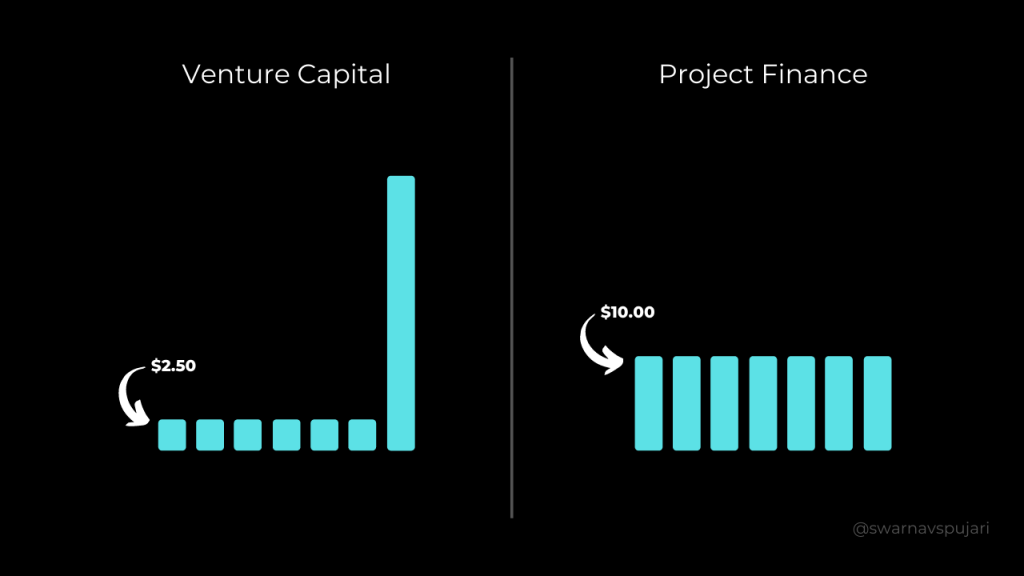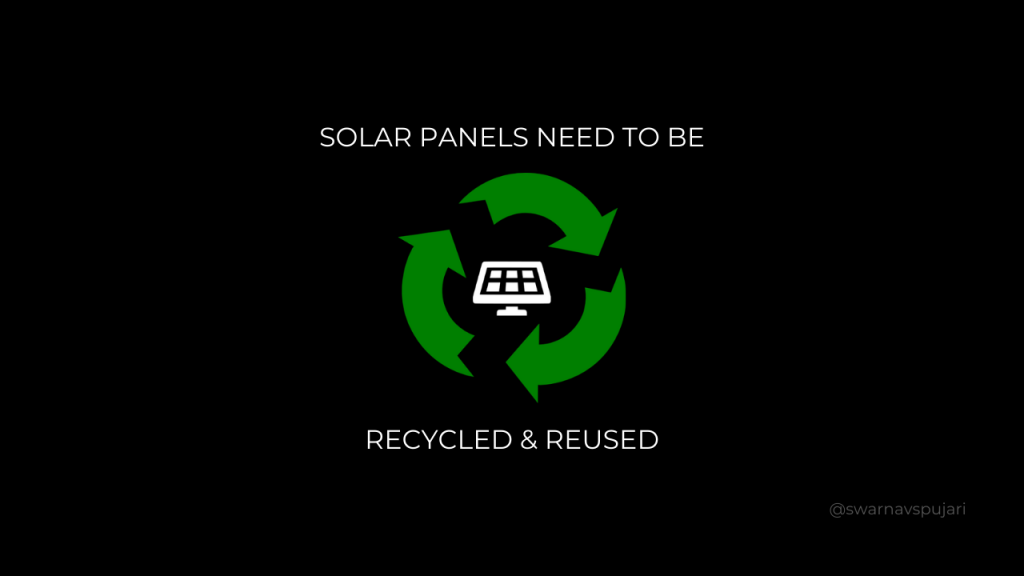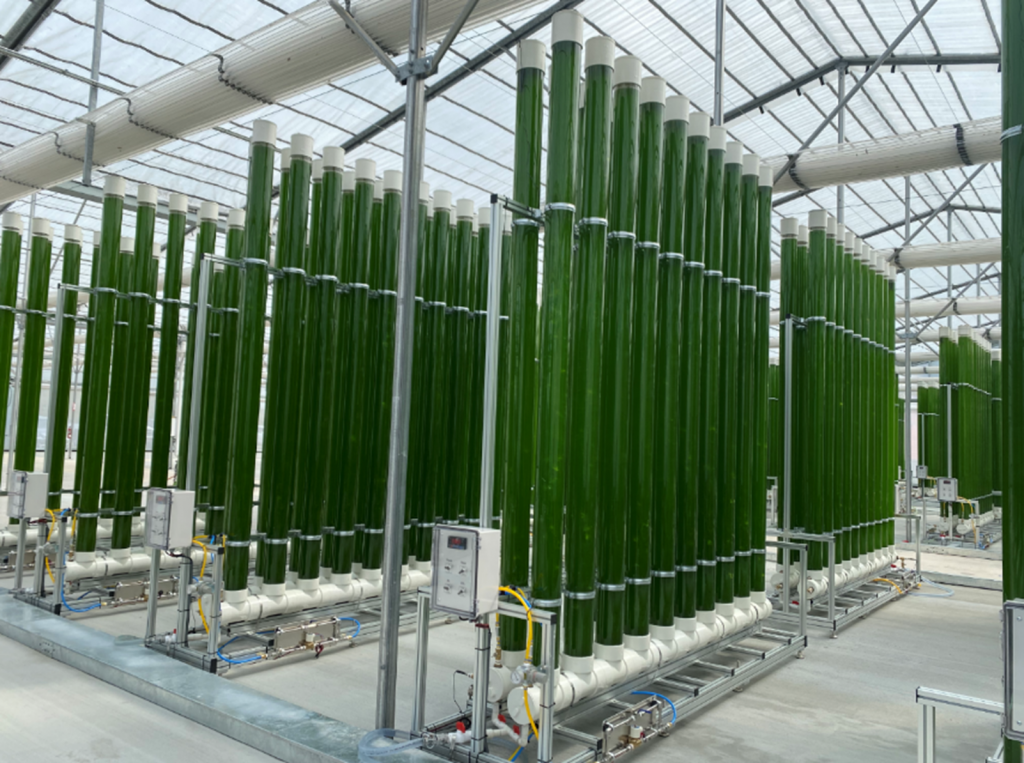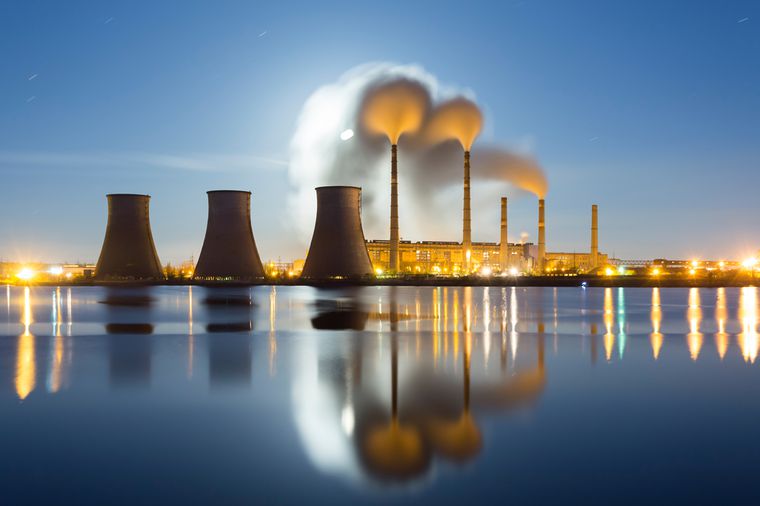Howdy
If I gave you $1 Billion to invest into the clean economy – would you be a VC or Project Financier and why?
This week Daniel – my co-founder at The Impact – posed this question on LinkedIn and sparked a healthy conversation around the benefits surrounding this topic. It even turned into a week long research project to understand the perspectives around this key question.
Who knows, maybe if you engage with us on social you might make it into a future Impact article!
Also if you want to help us out a bit – shoot me a quick reply sharing what value you gain from our weekly newsletter. It’ll really help us out while we go about making continuous improvements.
In Your Inbox: VC vs Project Finance for clean economy investing; evaluating solar panel recycling; TrueAlgae is making high quality algae; Carbon Capture investing heats up

I was bored Sunday morning, so I posted a question on LinkedIn with a question that I’ve been thinking about for a while now.
The solution to this short-term vs long-term tradeoff is a cooperation between public and private agencies. Among those, Corporate VC is playing an important part. New partnerships and investment vehicles are combining capital with other resources. Additionally, we may even see more challenges, similar to Elon Musk’s $100M carbon capture challenge.
Sign up for The Impact and learn the perspectives behind the latest sustainability trends

If you see the irony in this image then you understand that there are many factors at play while transitioning to a truly sustainable future. Renewable energy is a major driver in this change and so is the concept of circular economy. A circular economy is an economic and industrial ecosystem which is structured to prolong the value of material items to avoid the landfill as long as possible, if not altogether.
Luckily, there are examples of great frameworks in legislation and technology to effectively recycle solar panels at the end of life. The European Union and Japan have succeeded in setting up the laws, infrastructure and technology to handle their aging panels largely because PV modules are considered hazardous waste and are required by law to be dealt with accordingly.
Federal law dictates what happens to the disposal of solid waste and hazardous waste through the RCRA (Resource Conservation and Recovery Act). And this act requires a TCLP (Toxicity Characteristic Leaching Procedure) test to determine if a panel will leach hazardous materials to the environment (4). If it doesn’t leach, it is not considered hazardous waste. In other words, it can be considered non-hazardous and thrown in the landfill. Furthermore, if you can prove it is non-hazardous, it is fairly inexpensive to dispose of a panel in the landfill. This is largely why it is “not yet economical” to recycle solar panels in the US according to the Electric Power Research Institute.

This week Taka Kamezawa took time to discuss what he is working on at TrueAlgae.
TrueAlgae is a biotechnology company that has a very efficient, patented mode of production for making high-quality algae. We can monetize algae in many ways, including chicken feed, fish feed, and nutraceuticals, but our first market is as an organic liquid soil amendment. We are currently selling in bulk to large fruit and vegetable farms in California and Florida. We are also licensing our production technology in Mexico.
Our initial product, TrueSolum, is an organic soil amendment product that has demonstrated 20% yield increases in various fruits and vegetables. We have also proven up to 100% extended shelf life in various berries.
TrueAlgae currently sells TrueSolum, a natural and OMRI-certified organic solution to decrease the use of chemical fertilizers, improve soil quality, and increase crop yield.
TrueSolum is very different from the other micro and macro algae-based products. Our product is the cultured water, or “metabolite tea”, that results from the growth of the algae. As the algae grow, they express certain valuable metabolites into the growth medium. During harvest we separate the algae biomass from the metabolite tea to produce a clear, nutrient rich, cultured water that is sold to the farmers. The metabolites present in this cultured water act as both a prebiotic for the soil microbes, driving better nutrition into the plant through its roots, as well as a growth stimulant for the plant itself. As it does not contain any algae biomass, it is easily blended into the irrigation water and applied to the fields through drip irrigation, along with other agricultural inputs, without clogging the lines. It can also be used as a foliar application with added benefit.
Independent research has shown that TrueSolum reduced chemical fertilizer usage by 75% while increasing yield by nearly 9% when tested with strawberries. Decreasing the use of chemical fertilizers reduces harmful runoff which create many ecological challenges for our waterways. Our product also helps to sequester carbon in the soil, in direct contrast to NPK chemical fertilizers that emit nitrous oxide, which is roughly 300 times more potent in terms of greenhouse gas emissions than carbon dioxide.
In addition to increasing yield, our product also increases Brix (a measurement of sugar content) which is valuable for certain fruits and vegetables, and longer shelf-life of the crop. It is also pH neutral with no negative impact on the soil ecosphere.
Most of the algae based biofertilizers marketed and sold in the US are macroalgae or seaweed (kelp) based. They include Stimplex, Maritime, and KelpExpress, among others. All seaweed products are farmed in open water creating inconsistent product, potential for contamination and variable effectiveness.
Agriculture is the one of the top contributors to greenhouse gas emissions. The use of chemical fertilizers, particularly nitrogen, phosphorus and potassium (NPK), are drivers of these emissions. Because of this, there is a global movement to reduce the use of chemical fertilizers. Natural and organic TrueSolum has been shown to improve availability and uptake of NPK from the soil, thus allowing the reduction of NPK applications by as much as 75%, while providing farmers with increased yield and crop quality.
In addition, algae are an important part of a healthy ecosystem. They produce 50% of the oxygen we breathe by consuming the carbon and releasing the oxygen of the GHG, CO2. Through the process of growing algae, TrueAlgae is contributing to a healthier environment, in addition to helping to create healthier soil and crops.
We will be sharing our latest developments and our exciting future plan in an investor presentation hosted by Bethesda Green on Monday March 22, at 3 pm EDT (register here).
TrueAlgae’s proprietary technology grows algae in a unique, closed-loop, sustainable process. This highly efficient production allows for 50% of the algae to be harvested daily. They have raised $3.1 million so far and have over 30 field trials in motion globally – and for different produce.
There is a clear value add of TrueAlgae’s technology, from increasing crop yield and extending the shelf life of produce. TrueAlgae will contribute to the future of agriculture.

Writers: Swarnav S Pujari, Daniel Kriozere
If you aren’t absolutely thrilled with The Impact, reply and let us know why. Or you can unsubscribe from all updates by clicking here.
Copyright © The Impact 2021. All Rights Reserved || 19 Morris Ave, Bldg 128, Brooklyn NY 11205
Develop your market map of up-and-coming climate startups and market opportunities by subscribing to our weekly newsletter for free.